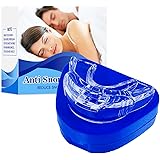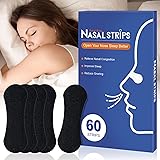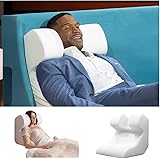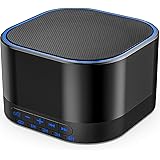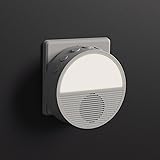Enhance Your Rest: How Technology Can Help You Sleep Better
Recent studies suggest that a significant portion of the adult population struggles with achieving consistent, high-quality sleep. In fact, it is estimated that approximately one-third of adults report getting less than the recommended amount of sleep. The video above highlights how cutting-edge technology is being utilized to address this widespread issue, with personal experiences showcasing various devices designed to promote better sleep quality. This guide will explore the fascinating world of tech for sleep, detailing how smart gadgets and innovative solutions are being developed to optimize your nighttime routine and enhance restorative rest.
The pursuit of optimal sleep is increasingly being supported by scientific advancements. Understanding the fundamental mechanisms of sleep allows for the development of targeted technological interventions. Melatonin, often referred to as the sleep hormone, is naturally produced by the body, playing a crucial role in regulating our circadian rhythms. Various environmental and behavioral factors can disrupt this delicate balance; however, modern gadgets are being designed to gently encourage its production and support healthy sleep cycles.
The Science of Sleep: Understanding Its Importance
Achieving truly restorative sleep is paramount for overall health and well-being. During sleep, vital physiological processes are carried out, including cellular repair, memory consolidation, and hormone regulation. Disruptions to this essential biological function can lead to a multitude of adverse effects, impacting everything from cognitive function to immune system efficacy. Many individuals seek effective, non-pharmacological methods to improve their sleep patterns.
It is generally recommended that adults obtain between seven and nine hours of sleep each night. However, modern lifestyles, often characterized by high stress levels and constant digital stimulation, frequently impede this recommendation. While traditional advice focuses on sleep hygiene practices, such as maintaining a dark, quiet room and avoiding caffeine, technology offers additional layers of support. Smart devices are increasingly being integrated into wellness routines, providing novel approaches to an age-old challenge.
Infrared Saunas: A Warm Path to Deeper Slumber
One notable innovation presented in the accompanying video is the infrared sauna, specifically the Clearlight ‘The Curve’ model, which offers a 360-degree experience. These saunas differ significantly from traditional steam or hot rock saunas. Instead of heating the air around you, infrared light penetrates the body directly, warming it from within. This method is often described as being more comfortable and allowing for longer sessions.
The benefits of infrared therapy extend beyond simple relaxation. It is suggested that regular sauna use can contribute to improved circulation and muscle relaxation, both of which are conducive to falling asleep more easily. Furthermore, the gentle warming sensation has been linked to increased melatonin production, thereby preparing the body for sleep. While a sauna session might typically be enjoyed earlier in the evening, the lasting warmth and relaxation can significantly prime the body for a tranquil night.
Smart Sleep Masks and Wearable Tracking Devices
For those seeking more direct, wearable sleep technology, intelligent masks and tracking rings are being explored. The Therabody SmartGoggles, for instance, were showcased for their ability to deliver heat and massage around the face and temples. These features are designed to alleviate tension and promote a state of relaxation before bedtime. They are not intended to be worn throughout the night; rather, they serve as a potent pre-sleep ritual, helping to unwind after a demanding day.
In contrast, devices such as the Manta Sound Sleep Mask offer a different approach to in-bed relaxation. Equipped with built-in Bluetooth headphones, these masks allow users to drift off while listening to calming music, white noise, or guided meditations. Such a design effectively blocks out light while simultaneously providing an auditory environment conducive to sleep. The combination of complete darkness and personalized sound can significantly enhance the ability to disengage from external stimuli.
Accurate sleep tracking is also recognized as an invaluable tool for understanding and improving sleep patterns. Wearable devices, such as smart rings, are designed to monitor various physiological metrics throughout the night. Data pertaining to heart rate variability, body temperature, and sleep stages (light, deep, REM) is passively collected. Analysis of this information allows users to identify trends and make informed adjustments to their routines or environment. Without objective data, it is often challenging to accurately assess the impact of different interventions, such as those presented in the video.
Integrating Wellness Gadgets into a Holistic Sleep Strategy
While innovative wellness gadgets offer promising avenues for sleep improvement, it is important to view them as components of a broader, holistic sleep strategy. Technology can certainly provide targeted solutions, but foundational sleep hygiene practices should not be overlooked. Establishing a consistent sleep schedule, ensuring a comfortable and dark sleep environment, and managing stress through mindfulness or exercise are all critical elements. These practices establish a solid groundwork upon which technological aids can further build.
For example, while a smart mask can block light, it will be more effective when combined with a room that is already optimized for darkness. Similarly, the benefits of an infrared sauna are amplified when followed by a calming bedtime routine. It is often recommended that experimentation be approached systematically, allowing individuals to discover which combinations of traditional practices and modern tech for sleep yield the most profound results for their unique physiological needs. A mindful approach to integrating these tools will generally lead to more sustainable improvements in rest.
The journey toward truly better sleep is a personal one, often involving exploration and adjustment. The array of sophisticated sleep technology available today offers exciting possibilities for enhancing our nighttime rest. From promoting melatonin production with infrared heat to delivering personalized relaxation through smart masks and providing invaluable data via tracking rings, these innovations are revolutionizing how sleep quality is approached. Embracing these advanced tools, in conjunction with consistent healthy habits, holds significant potential for achieving the deep, restorative sleep that is essential for optimal health and vitality.


